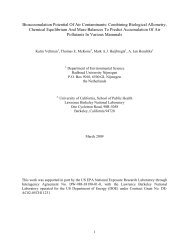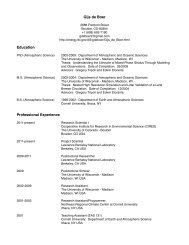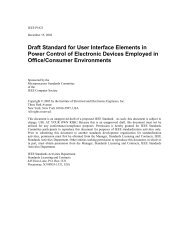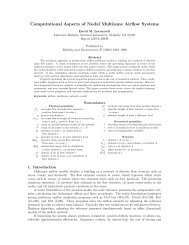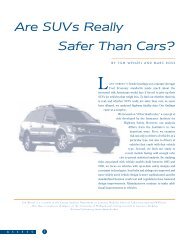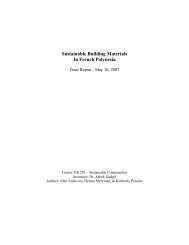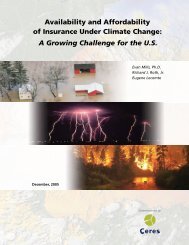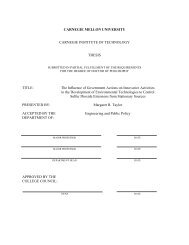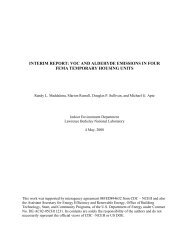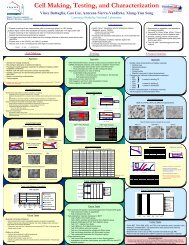indoor-outdoor air leakage of apartments and commercial buildings
indoor-outdoor air leakage of apartments and commercial buildings
indoor-outdoor air leakage of apartments and commercial buildings
Create successful ePaper yourself
Turn your PDF publications into a flip-book with our unique Google optimized e-Paper software.
sample every county in California, although the Census Bureau intends to modify the survey to<br />
do so in the future. The survey is designed to permit estimates <strong>of</strong> statewide statistical<br />
distributions even though not all counties are included. The 2004 results estimate that there are<br />
12 million occupied housing units in California, <strong>and</strong> another 800,000 unoccupied units (about<br />
80% <strong>of</strong> them <strong>apartments</strong>). Most California housing units (58%) are single family detached<br />
houses, <strong>and</strong> about 4.5% are mobile homes. The remaining 37.5% <strong>of</strong> housing units are in multiunit<br />
structures, including duplexes, townhouses or row houses, <strong>and</strong> apartment <strong>buildings</strong>.<br />
Table 4: Multi-unit or attached housing in California, by size <strong>of</strong> building.<br />
Type <strong>of</strong> building Number <strong>of</strong> Percent <strong>of</strong> all Percent <strong>of</strong> nonunits<br />
housing units single-unit-<br />
(thous<strong>and</strong>s) detached housing<br />
units<br />
I-unit attached 940 7 17<br />
2 units 320 3 6<br />
3 or4 units 720 6 13<br />
5 to 9 units 820 6 15<br />
10 to 19 units 660 5 12<br />
20 or more units 1402 11 25<br />
Table 4 shows the numbers <strong>of</strong> housing units that occur in <strong>buildings</strong> <strong>of</strong> different sizes. Excluding<br />
single-family detached houses, about half <strong>of</strong> the remaining housing units are in <strong>buildings</strong> that<br />
contain at least five <strong>apartments</strong>, <strong>and</strong> about a quarter are in <strong>buildings</strong> that contain 20 or more<br />
<strong>apartments</strong>.<br />
There is considerable variation in the housing stock between heavily urbanized areas <strong>and</strong> less<br />
urban areas. For example, in San Francisco County (which contains San Francisco, California,<br />
one <strong>of</strong> the densest cities in the country) 24% <strong>of</strong> all housing units are in <strong>buildings</strong> <strong>of</strong> 20 units or<br />
more, <strong>and</strong> 45% are in <strong>buildings</strong> <strong>of</strong> 5 units or more. In contrast, in Tulare County, a rural county<br />
south <strong>of</strong> Fresno, only 2% <strong>of</strong> all housing units are in <strong>buildings</strong> <strong>of</strong> 20 units or more, <strong>and</strong> only 6%<br />
are in <strong>buildings</strong> <strong>of</strong> 5 units or more.<br />
7.3. Gaps in Current Knowledge<br />
The general lack <strong>of</strong> knowledge about building leakiness has been noted by previous researchers,<br />
for both <strong>commercial</strong> <strong>buildings</strong> <strong>and</strong> <strong>apartments</strong> (Diamond et al. 1996, Persily 1999). Based on<br />
available data, we cannot definitively answer even some basic questions, such as:<br />
1. How many <strong>buildings</strong> <strong>of</strong> different types are leaky or extremely leaky?<br />
39



